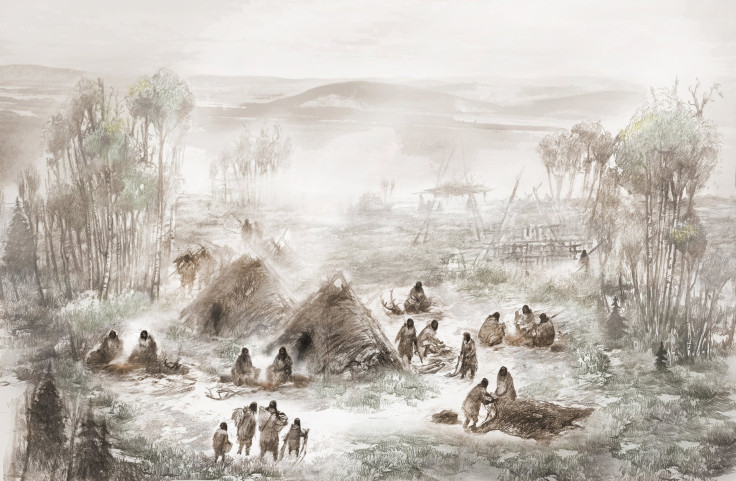Baby Skeleton Reveals Genetic History Of Native Americans And Mysterious Migration

The skeleton of a baby from 11,500 years ago might tell scientists more about when and how the ancestors of Native Americans first traveled over from Asia.
A team of researchers who collected the infant’s remains at an archaeological site in Alaska called Upward Sun River and analyzed her DNA say she is related somewhat to Native Americans but represents a genetic lineage that came before those other people. A study in the journal Nature referred to the child as part of “a distinct Ancient Beringian population.”
Based on their genetic analysis, the scientists are suggesting that both the “Ancient Beringian” community that the infant belonged to and other Native American ancestors were part of a group that separated from prehistoric Asian populations about 25,000 years ago and later migrated to North America in a massive wave.
That huge migration would have followed a path over the Bering strait, a sunken land bridge that once connected Siberia and Alaska, and could have been more than 20,000 years ago.
From there, according to the study, the newly identified group called the Ancient Beringians separated into its own branch on the genetic tree.
Then, between roughly 14,600 and 17,500 years ago, the genetic branches to which northern and southern Native Americans belong split apart themselves.
Experts have long debated how many thousands of years ago the ancestors of Native Americans crossed over from Asia. There has even been some discussion over their mode of transportation, with one recent paper suggesting that the prehistoric people traveled by sea, floating across to the Americas in boats and then down along the shallow waters of the coasts, finding food along their way.
One persistent question has been whether the migrants came over in spurts or all at once, and the new genetic analysis seems to suggest the latter.

“We were able to show that people probably entered Alaska before 20,000 years ago,” researcher Eske Willerslev said in a statement from the University of Cambridge. “It’s the first time that we have had direct genomic evidence that all Native Americans can be traced back to one source population, via a single, founding migration event.”
The infant whose remains were analyzed has been named Xach’itee’aanenh t’eede gay — or Sunrise Child-girl in English.
“It looks as though this Ancient Beringian population was up there, in Alaska, from 20,000 years ago until 11,500 years ago,” researcher José Víctor Moreno-Mayar explained, “but they were already distinct from the wider Native American group.”
© Copyright IBTimes 2025. All rights reserved.





















